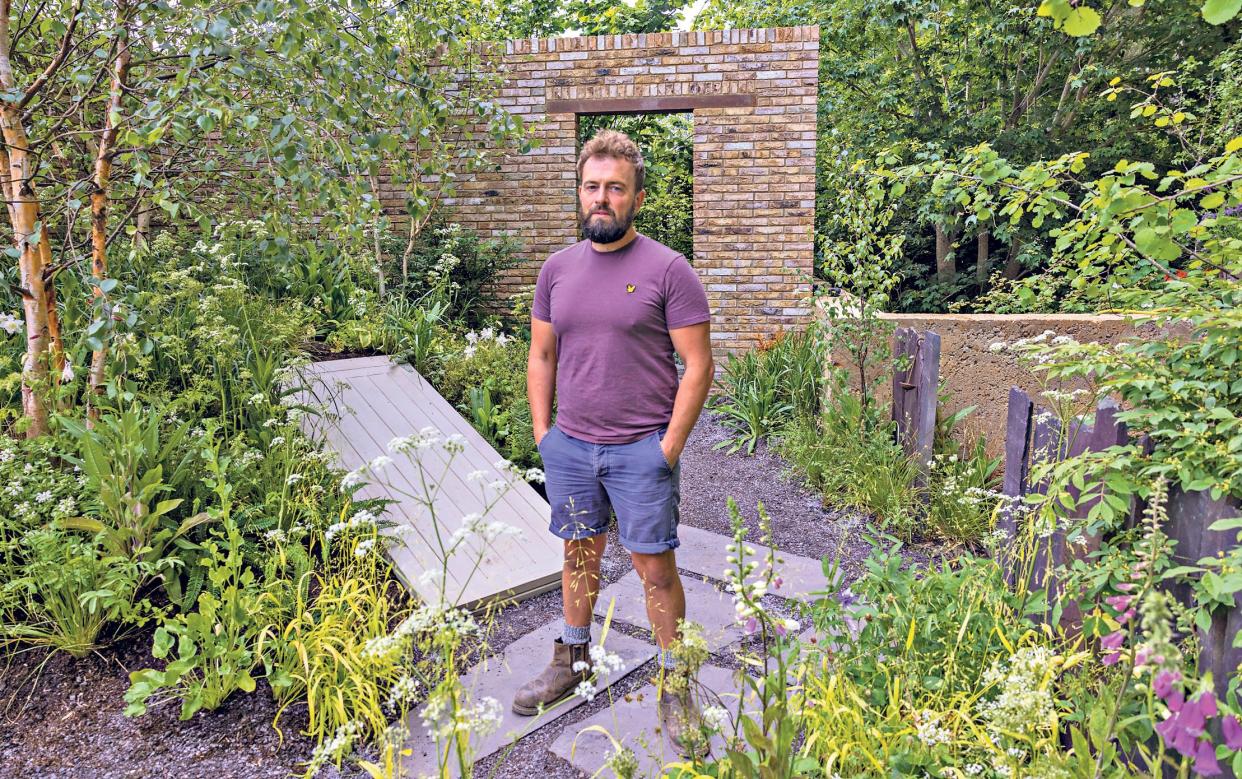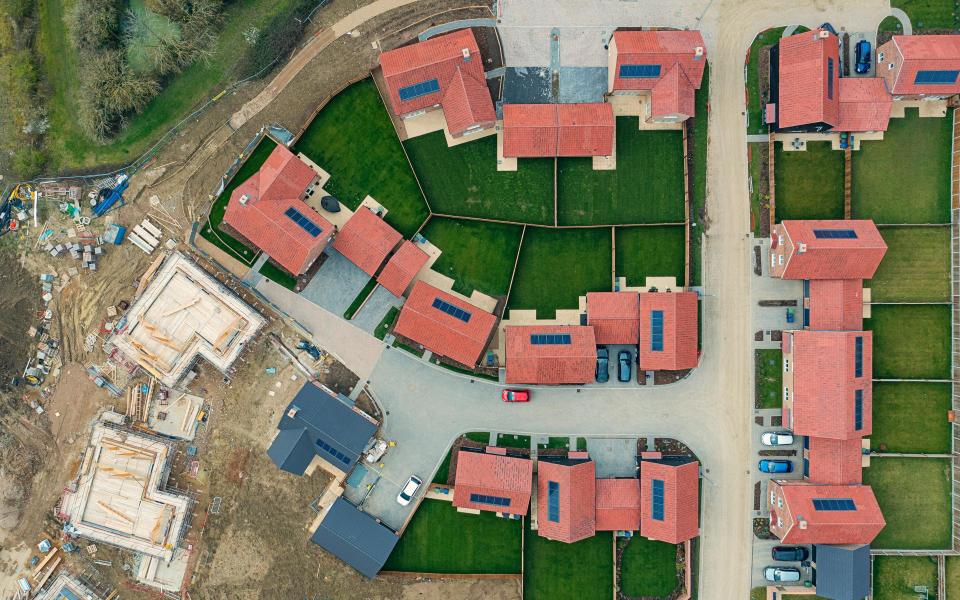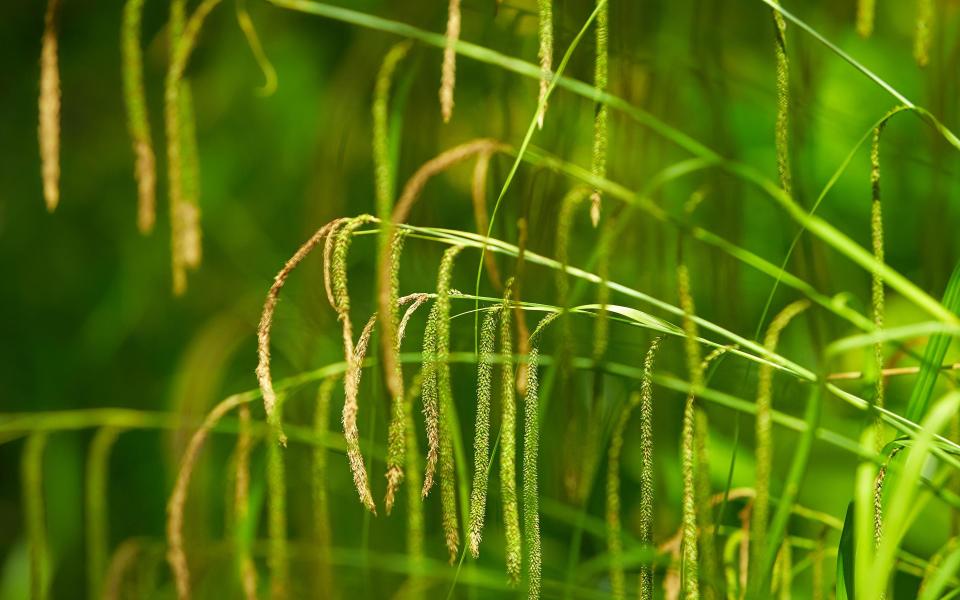Four jobs that will instantly improve a new-build garden

This year saw the first ever “brownfield garden” at the RHS Chelsea Flower Show. Imagined as the metamorphosis of a former 1900s industrial site, the Brewin Dolphin garden, designed by Paul Hervey-Brookes, was created to illustrate how gardeners can bring former brownfield land back to life and transform it into a thriving garden, simply using the power of plants.
With thousands more of us buying new-build homes on former brownfield land, and with more set to be built in the coming years, what can new homeowners do when faced with contaminated land and poor, unpromising soil conditions? And is it wise to think about growing your own food?
The message of this show garden is: don’t despair if you take on a garden with growing conditions so bad you’re tempted to pave over it or use plastic grass. Instead, tap into the power of plants to improve the soil and help you transform your space into a vibrant, nature-friendly garden that works for you and the wider environment.

“It’s worth saying that homes aren’t built on very badly contaminated land,” says Paul Hervey-Brookes when I speak to him at Chelsea. “Former factory land, mines, steelworks and landfill sites can be contaminated with heavy metals, oils, chemicals and asbestos etc, but there are strict laws in place and planning permission isn’t granted if levels of contamination are above a certain level.”
While certain metals, such as iron, can be found in large quantities, the main problem new homeowners face when buying new-build properties is that the soil “isn’t brilliant”, says Hervey-Brookes. “If it’s your first home and you inherit a ‘garden’ that’s essentially rubble or with little or no topsoil, you’re going to buy plants that don’t thrive. It’s disheartening,” he says, “so I set to looking at how we can improve landscapes to make new-build gardens better off.”
Whether built on former brownfield land or not, new-build gardens are often poor because the topsoil is removed during the building process, and then heavy machinery compacts the subsoil. What’s left is often “builders’ rubble” which may even have pieces of building waste hidden within it. As a result, new-build gardens tend to have very few nutrients, while the soil itself is so compacted it can’t breathe and plant roots will struggle to penetrate.

Topsoil may have been returned or added at some point, and even a lawn and borders created on top of that, but the underlying soil structure will be completely unnatural and probably not able to support life in the long term. What many new-build homeowners notice first is that their lawn starts to deteriorate after a few months of them moving in. Obvious symptoms include dead/brown patches, yellowing grass where the turf has not been able to absorb nutrients, and weeds.
The planting for the Brewin Dolphin show garden was based on using native pioneer species, such as birch and buddleia, along with tough grasses (Carex pendula), shrubs (Euonymus alatus) and ferns (Dryopteris affinis). These plants have evolved to colonise barren soils and are tolerant of poor soil conditions. They’re often found growing on exposed sites, where they start the process of rehabilitating the soil, allowing much-needed microorganisms and air in.
Hervey-Brookes also included shrubs, including Rosa glauca, Rosa canina and Rosa rugosa, that “pretty much grow anywhere”, he says. The roots of these shrubs and trees break up heavy, compacted soils, helping them to breathe, which is the first step in improving brownfield soil.
Then there are herbaceous garden plants, such as campanula, verbascum, wild strawberry, teasel, angelica and oregano. Tolerant of low-nutrient soils, these plants die back each autumn, when they help to create a high density of organic material on the ground. Slowly – over a 10 to 20 year period – this builds up to create a new layer of topsoil.

The garden was built as an example not just to show how you can improve former brownfield land with plants, but how you can improve the wider environment with your garden.
As well as growing pioneer plants, shrubs that need few nutrients and lots of herbaceous plants, Hervey-Brookes considered other environmental factors in his garden design. Shrubs and perennials that flower for long periods of time add nectar banks for pollinators, along with habitat potential for other insects. And he used trees, shrubs and other plants that collect carbon dioxide at higher rates than other species to improve air quality.
“We planted a lot of furry-leaved plants [for example cotoneaster and lamb’s ear],” says Hervey-Brookes, “which trap dust and pollutants from the air. Then there’s birch, poplar and alder, which absorb more C02 than other trees.”
New-build gardens might pose challenges for new homeowners, but they offer a wealth of possibilities.
Be inspired by Paul Hervey-Brookes’s plant list for Chelsea
Assess the site
Before planting a new-build garden, assess the site. This can save you a lot of heartache in the long run.
Look at your lawn. Has it been laid well on prepared soil? If not, it may start to deteriorate; you may find that taking it up, improving the soil and then re-laying with new turf is your best option.
Check drainage – are any parts of the garden not draining well?
Conduct a soil analysis. You can buy test kits where you take a soil sample and send it off to a laboratory for a report. This is especially important if you want to grow food – I did a test when I moved into my Victorian home; the report identified higher than average levels of iron in my soil, which made me think twice about growing edibles. In this situation, raised beds could be the answer.
Four ways to improve a new-build garden
To improve drainage, double dig the soil – although hard work, this will help break up compaction and allow soil to breathe. You don’t have to do it all in one go – divide the garden into sections and work one at a time to make the job more manageable. Remove any debris or waste as you go along. In a large garden, you may consider hiring a rotovator, but this may not be appropriate if the soil contains a lot of rubble, or contaminants such as wire
Mulch the soil with anything from well-rotted animal manure to leaf mould or home-made compost. This will help to improve nutrient levels. You will need to do this annually for the first few years, as well as grow a mix of pioneer plant species and herbaceous plants that will help to build up a new layer of topsoil
Choose plants that will thrive. Don’t be too ambitious – even if you double dig and mulch, it would be wise to grow plants that don’t need a lot of TLC, especially in the first few years
Follow the “right plant, right place” mantra. Is the site exposed to wind, or in a dry or damp region? Are you near the coast? Is it light or shady? Taking this into account before buying plants will help you make decisions that work long term

